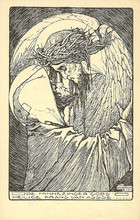Jos Speybrouck
(1891-1956)
Art Deco always suggested for me the lobby of Radio City Music Hall, voyages on the Queen Mary, glamour, luxury, and the delirious decadence of the Roaring ‘20s--not exactly a cultural movement I would have associated with great sacred art! Finding a drawing in ink of the Crucifixion by Belgian Artist Jos Speybrouck forced me to reconsider that superficial assessment.
Art Deco is, actually, a term coined in the 1960s for a distinctive sense of design, known in its own time (between the two World Wars) as Style Moderne. Whatever you choose to call this school of art, Speybrouck definitely belongs there, given his use of simplified, elongated forms, sinuous lines, geometric, almost pyramidal compositions, and brilliant color (on those occasions when he abandoned a pure, monochrome style.)
Not that Speybrouck particularly cared about artistic labels. The son of a restorer of antiques, he used to accompany his father on repair jobs in churches and monasteries around Belgium, steeping himself in medieval lore. Speybrouck received a Roman Catholic education, taught art in parochial schools, and remained a faithful servant of the church all his life, believing his art should not only move viewers but teach them.
From 1923 to 1940, Speybrouck worked closely with the Benedictine Order at the Abbaye-de-St.-Andre near Bruges in creating a cycle of chomolithographic illustrations of the liturgical calendar, as well as mass-market post card series with sacred themes. The posters in my collection depicting texts from the lectionary for Sundays and feast days come from an early French edition and a later print run in Spanish.
Art Deco was a highly eclectic movement, influenced by everything from the art of Ancient Egypt and the Baroque to the Pre-Raphaelites and contemporary industrial design. Two distinct, almost competing, styles appear in Speybrouck’s religious works. The figures in the postcards titled Eucharist II and The Annunciation are elegantly minimalist, barely emerging out of geometric forms.
What a striking contrast to the serpentine waves and the serrated pleats of Jesus’s wind-whipped robes in the chromolithograph, Christ Stills the Storm or the swirling clouds of incense in The Ascension, where you see Speybrouck in full-blown, heroic Baroque mode! Whether in stillness or storm, there is always something visually stunning about Speybrouck’s way of making sacred art.
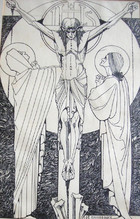
The Crucifixion
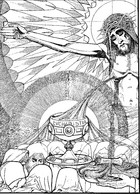
The Eucharist
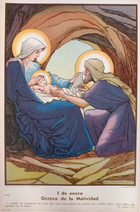
The Birth of Christ
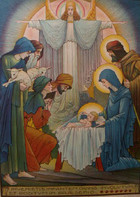
Adoration of the Shepherds
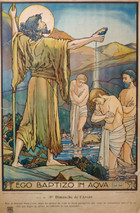
"I Baptize with Water"
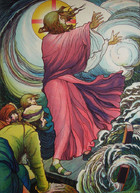
Jesus Stills the Storm
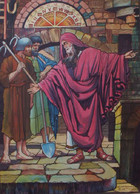
The Parable of the Vineyard Laborers
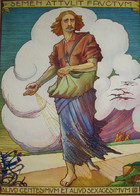
The Parable of the Sower & the Seed
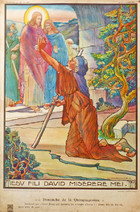
"Jesus, Son of David, Have Mercy on Me"
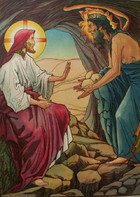
The Temptation of Christ
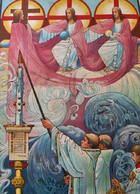
The Ascension
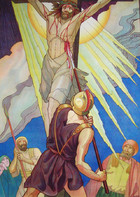
The Piercing of Christ
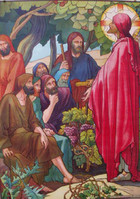
The Fruit-Bearing Tree

The Lilies of the Field
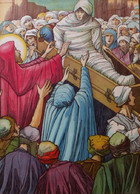
The Widow of Nain
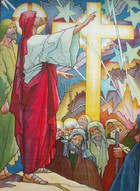
The Second Coming of Christ
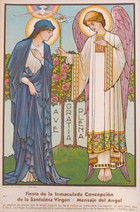
The Annunciation
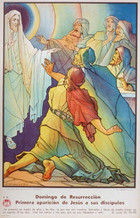
Jesus’ First Appearance to His Disciples
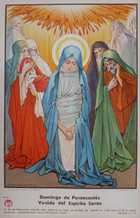
The Coming of the Holy Spirit
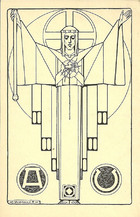
Eucharist II
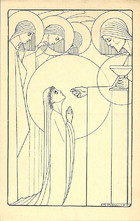
Eucharist III
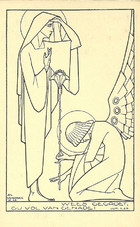
The Annunciation
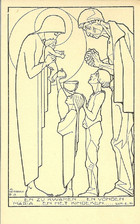
The Adoration of the Shepherds II
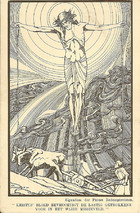
The Crucifixion II
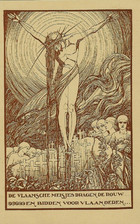
The Crucifixion III
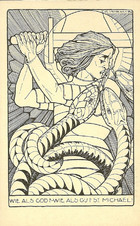
The Archangel Michael
